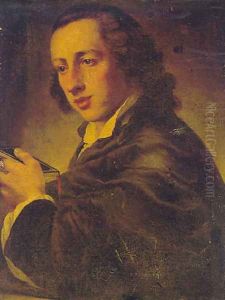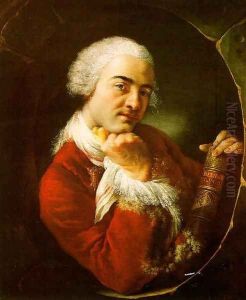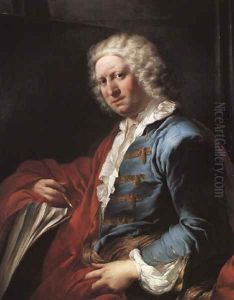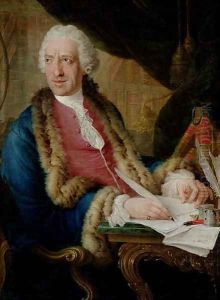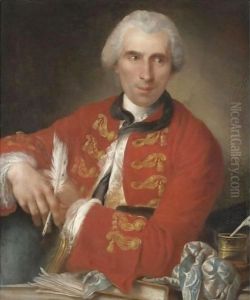Louis-Gabriel Blanchet Paintings
Louis-Gabriel Blanchet was a French painter, primarily known for his portraits, active in the Rococo period. Born in 1705 in Paris, Blanchet became an important figure in the artistic scene of the 18th century. He studied under the prominent French painter Hyacinthe Rigaud, who was known for his portraits of Louis XIV and other members of the nobility. Under Rigaud's guidance, Blanchet developed his skills in capturing the likeness and character of his sitters with a particular emphasis on opulence and grandeur, attributes that were highly valued in the Rococo era.
Blanchet's career was marked by his success in portraiture, which was a lucrative field at that time, as the nobility and the wealthy bourgeoisie were eager to have their likenesses captured for posterity. He gained recognition and patronage from various European courts, and his work took him to Italy, where he spent a significant amount of time. During his Italian sojourn, especially in Rome, he became influenced by the Italian masters and incorporated some of their stylistic elements into his own work.
Despite the popularity of his portraits, there is limited information regarding his personal life, and he did not leave behind the same legacy as some of his contemporaries, such as François Boucher or Jean-Honoré Fragonard. However, his portraits are noted for their elegance, attention to detail, and the rich use of color that was characteristic of the Rococo period.
Blanchet's contributions to the world of French painting were appreciated in his time, and his works were collected by art connoisseurs and are housed in various museums today. Louis-Gabriel Blanchet passed away in 1772, leaving behind a body of work that embodies the sophistication and opulence of the Rococo style. Although he may not be as well-remembered as some of his peers, his art provides valuable insights into the aesthetics and social dynamics of the 18th century French elite.
